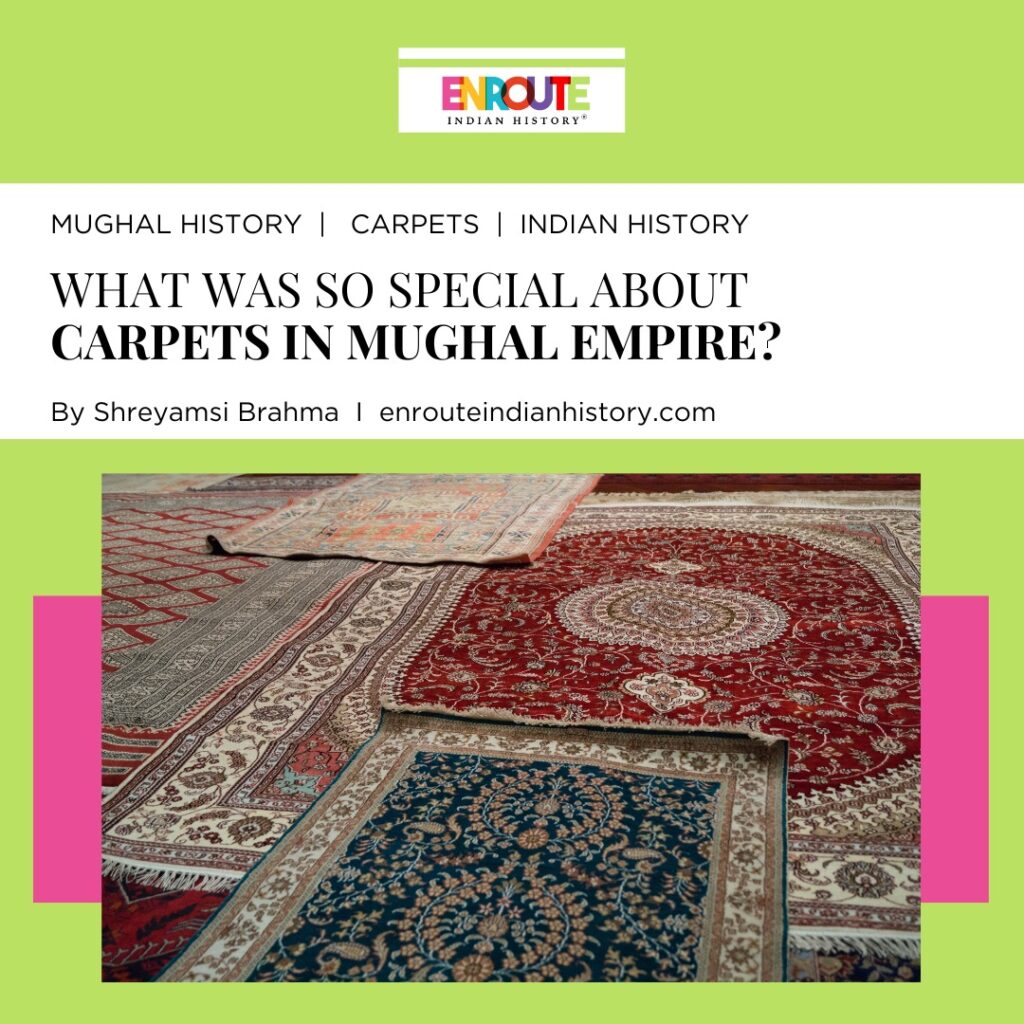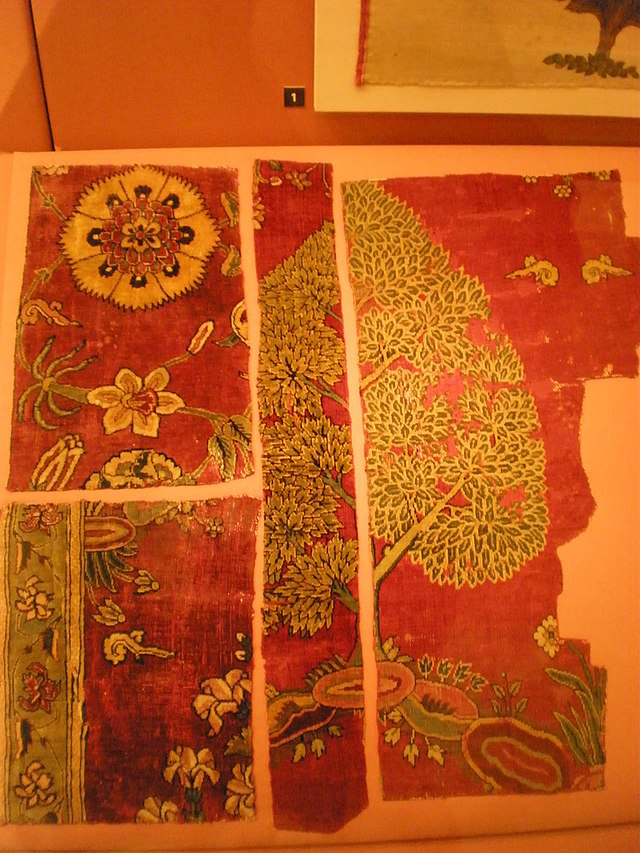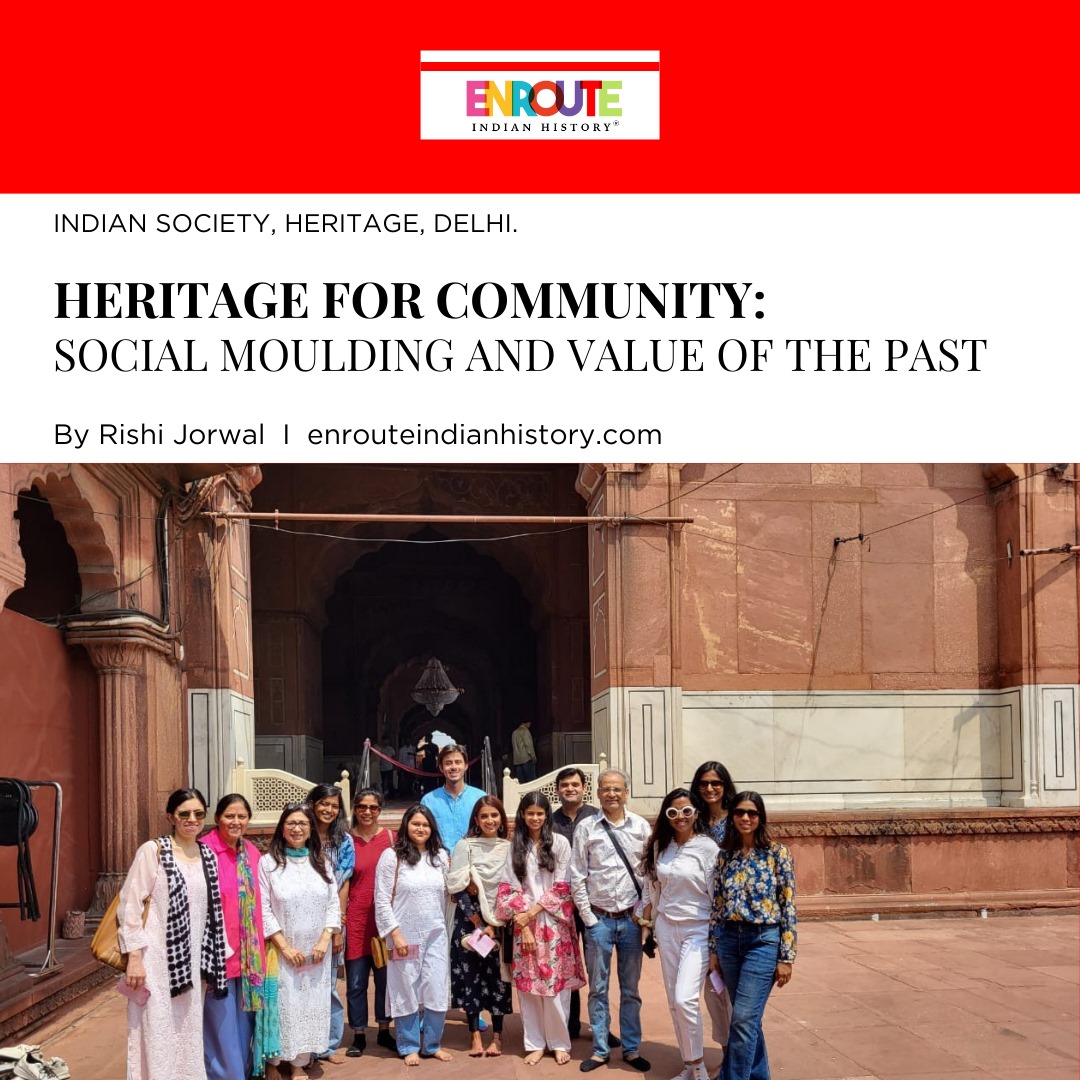
Carpets, alternatively known as “Farsh” or “Qali,” have played a significant role in the cultural and economic history of India, particularly during the reign of the Mughal Empire. The Mughals, who dominated a large part of the Indian subcontinent from 1526 to 1858, are renowned not only for their expansive political policies and conquest techniques but also for their passion for art and architecture. In their royal courts, they displayed intricate carpets, showcasing their fondness for beauty and luxury.
The Mughals, having originated from the Mongol dynasties of Iran and Central Asia, swiftly established their cultural endeavors in India. This included their passion for carpet weaving, a craft that found expression in the intricate patterns of traditional Indian rugs. While the early Mughals valued Persian artisans and drew inspiration from Persian rugs, a unique artistic characteristic specific to the Mughal era began to surface in miniature paintings, royal carpets, and various other artistic expressions. Renowned for their love of opulence and extravagance, the Mughals introduced a distinctive touch to Indian art and decor. Babur attempted to infuse Persian art into the structures and gardens he built, but it was during Akbar’s reign that art flourished in the Mughal Empire, later Jahangir and Shah Jahan, each contributed to the legacy of the flourishing rg-making industry.

Signature Mughal Style Carpet, Image Courtesy: Wikimedia Commons
Carpet weaving in the Mughal Empire experienced a renaissance under Akbar, who was the first Mughal Emperor actively involved in introducing new art and culture, and played a pivotal role in bringing Persian rug makers to teach Indian artisans the art of making Persian pile rugs. He established the Farrash-khana, or carpet department, around 1580 to address the scarcity of carpets. Skilled artisans from Iran and Central Asia infused new designs, transforming carpet weaving into an art form. The intricate patterns crafted during Akbar’s reign, as detailed by Abu’l Fazl, featured woolen, cotton, and silk carpets, showcasing the diversity of materials and techniques. Later, Jahangir and Shah Jahan continued to promote art and the rug-making industry in their ways, with Lahore and Kashmir emerging as chief centers for high-quality carpet-making.
In the mid-seventeenth century South Asia, the Mughal aesthetic style reached an apogee of artistic expression, influencing the arts of the region for centuries. The current exhibition, featuring two 17th-century Mughal carpets from the Doris Duke Collection, illustrates this distinctive Mughal idiom and reveals the continuity of the artistic tradition in contemporary India and Pakistan. These carpets, once gracing the tomb of the Mughal emperor Shah Jahan, are now available for public viewing, symbolizing the democratization of art.

Three Mughal Carpet Fragments, 17th CE, Source: Wikimedia Commons
As the Mughal Empire declined, carpet making transitioned into a small industry, providing employment opportunities for skilled laborers. The late 17th century witnessed the introduction of new styles and patterns, signifying the evolution of carpet making into a small-scale industry. Beyond utilitarian purposes, carpet making became a symbol of cultural richness and economic significance, thriving in the 17th century market and attracting attention from European nations.
The skill of carpet weaving in the Mughal Empire beautifully combines cultural richness with economic importance. As royal carpet departments were established and intricate designs evolved, carpets played a vital role in shaping the cultural and economic landscape of Mughal India. The establishment of royal carpet departments underlined the significance of carpets not just as functional items but as symbols of cultural refinement and prestige. These carpets became an integral part of the Mughal court, adorning palaces and noble residences. The intricate designs woven into the fabric were not merely decorative; they reflected a harmonious blend of diverse artistic influences, showcasing the cultural richness of the Mughal era.
Culturally, Mughal carpets significantly influenced the aesthetic preferences of the elite. Beyond mere utility, these carpets were highly sought-after and exchanged as prestigious gifts among royal figures. They symbolized wealth, luxury, and power, shaping the tastes of the ruling class and setting the tone for imperial spaces. The cultural importance of these exquisite carpets was emphasized on public occasions, festivals, and important events, enhancing their significance even more. Economically, the impact of Mughal carpet weaving was substantial. The flourishing market for these carpets in the 17th century attracted attention from European nations, turning them into a sought-after commodity in global trade. The economic activity generated by the production and trade of Mughal carpets provided livelihoods for skilled laborers and contributed to the overall prosperity of the empire. The artistry and craftsmanship associated with Mughal carpets added significant value, making them not just functional objects but valuable assets in the economic landscape.
The enduring legacy of Mughal carpet weaving is celebrated for its artistry, as the intricate patterns and designs continue to captivate admirers. These carpets have transcended their historical context and retained their significance in the domestic and global markets. Today, they serve as tangible links to the rich cultural heritage of Mughal India, embodying the skilled craftsmanship and artistic vision that defined an era. The influence of Mughal carpet weaving is not confined to the past; it reverberates through time, leaving an indelible mark on the world of art and craftsmanship.
- April 18, 2024
- 22 Min Read
- April 18, 2024
- 5 Min Read


























